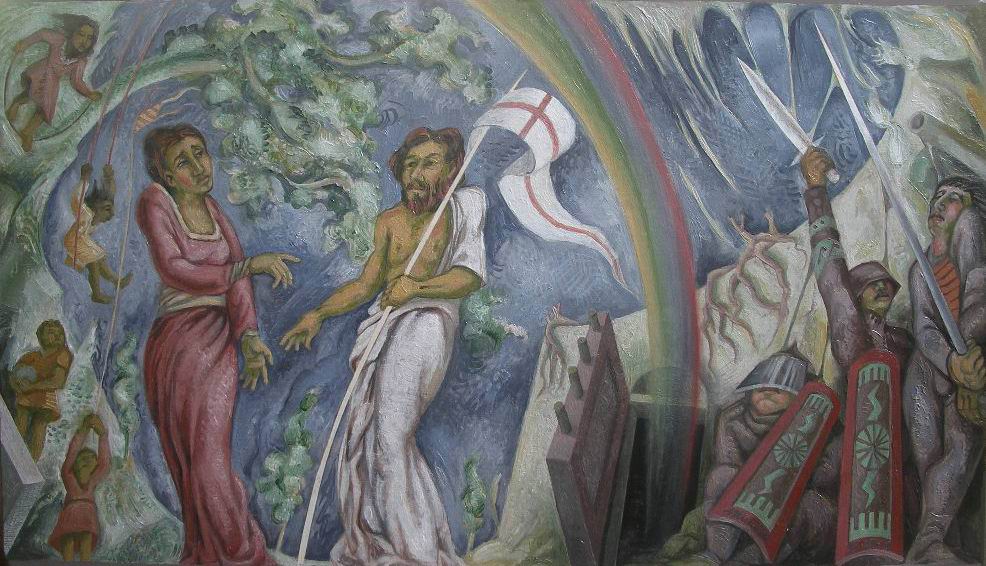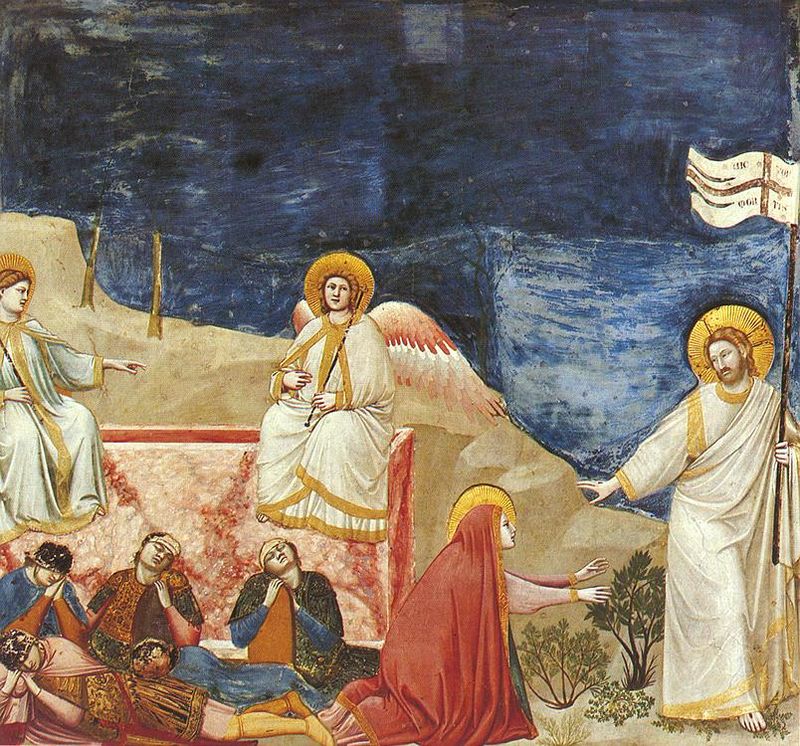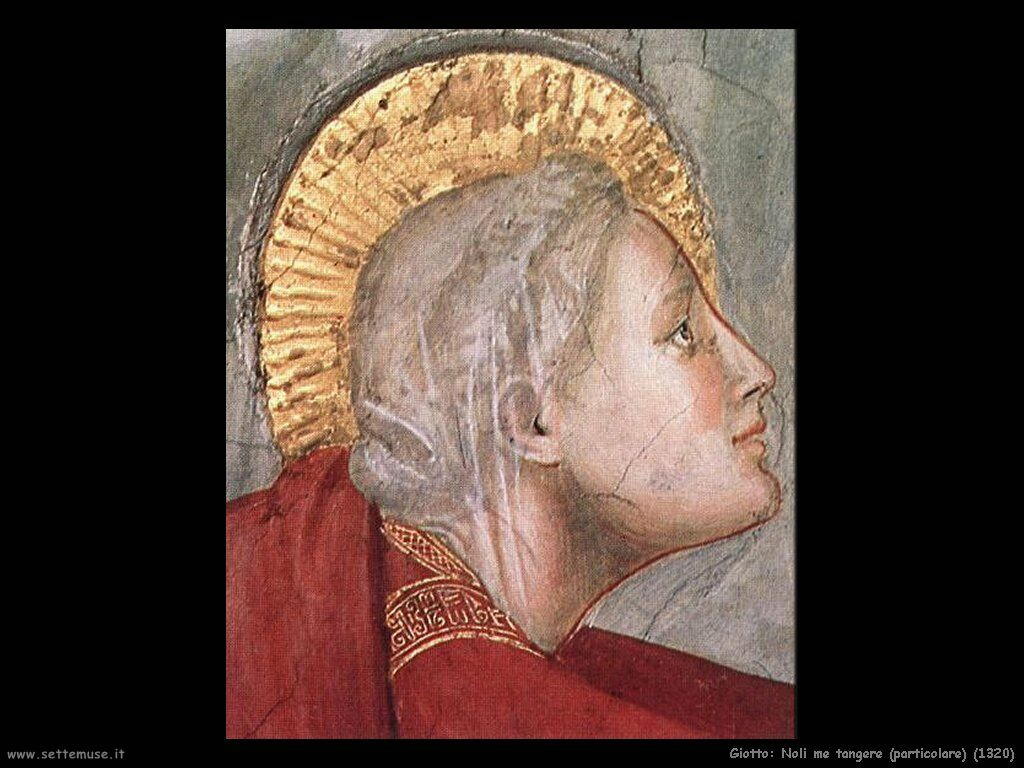Noli me tangere Russian icon, Jesus and Mary Magdalen online sales on
Resurrection and Noli Me Tangere" The following 11 files are in this category, out of 11 total. Giotto (1905) (14589963377).jpg 2,816 × 2,188; 1.11 MB. Giotto - Scrovegni - -37- - Resurrection (Noli me tangere).jpg 804 × 750; 156 KB. Giotto di Bondone - No. 37 Scenes from the Life of Christ - 21.

Noli me tangere Montaione in Tuscany
Resurrezione e Noli me tangere. La Resurrezione e Noli me tangere è un affresco (200x185 cm) di Giotto, databile al 1303 - 1305 circa e facente parte del ciclo della Cappella degli Scrovegni a Padova. È compreso nelle Storie della Passione di Gesù del registro centrale inferiore, nella parete sinistra guardando verso l'altare.

La Passione, Morte e Resurrezione secondo Giotto Vatican News
The Spanish colonization of the Philippines—which began in 1521—is the driving force of Noli Me Tangere, a novel that critiques the ways in which colonialism leads to corruption and abuse. The book itself predates the Philippine Revolution of 1896 by almost ten years, meaning that its rejection of Spanish oppression was groundbreaking and.

Noli me tangere, Art, Giotto
Noli Me Tangere takes place in the Philippines during the time of Spanish colonization. In the opening scene, a wealthy and influential Filipino man named Captain Tiago hosts a dinner party to welcome Juan Crisóstomo Ibarra y Magsalin back to the Philippines. Ibarra has spent the last seven years studying in Europe. In talking to the various guests at Captain Tiago's dinner party, he.

Icona Immagine di Dio Noli me tangere, un'iconografia di una scena del
La locuzione noli me tangere, che appare per la precisione al versetto 20,17 del vangelo di Giovanni, è contenuta in questa forma nella traduzione della Vulgata, che recita "Noli me tangere, nondum enim ascendi ad Patrem meum": il senso è stato interpretato come un invito, da parte di Gesù a Maria, a non voler controllare se egli, dopo la resurrezione, avesse un corpo in carne e ossa, cosa.

San Martino al Tagliamento, affreschi La bottega del pittoreLa
v. t. e. Noli Me Tángere ( Latin for "Touch Me Not") is a novel by Filipino writer and activist José Rizal and was published during the Spanish colonial period of the Philippines. It explores perceived inequities in law and practice in terms of the treatment by the ruling government and the Spanish Catholic friars of the resident peoples in.

CriticAle NOLI ME TANGERE
On Facebook, the National Historical Commission of the Philippines (NHCP) announced the release of the facsimile (faithful reproduction) of the original Spanish manuscript of Rizal's famous novel. According to the Commission, the original Spanish manuscript as written by Rizal contained his own handwriting, his edits, corrections, and.

NOLI ME TANGERE STORIA E OPERE D'ARTE
resurrezione e noli me tangere It was painted between 1303 and 1305 by Giotto and it is part of the cycle of the frescos of Scrovegni chapel in Padua. It rapresents one of the Stories of the Passion of Jesus and it is located in the lower central register in the wall.

202104.04. Hurra! Es ist Ostern MariefeiertmitPaul
The facsimile of Noli Me Tangere is a faithful reproduction of Dr. Jose Rizal's own handwriting, including corrections and deletions he made in the original manuscript before he submitted it to the Berliner Buchdruckerei Aktiengesellschaft in March 1887. Since it is the original, expect the text to be in Spanish.

NOLI ME TANGERE STORIA E OPERE D'ARTE
La Resurrezione e Noli me tangere è un affresco (200x185 cm) di Giotto, databile al 1303-1305 circa e facente parte del ciclo della Cappella degli Scrovegni a Padova. È compreso nelle Storie della Passione di Gesù del registro centrale inferiore, nella parete sinistra guardando verso l'altare. Descrizione e stile

Simbologia della Resurrezione e Noli me tangere di Giotto I Simboli
L'affresco preso in esame è La Resurrezione e Noli me tangere, compreso nelle Storie della Passione di Gesù del registro centrale inferiore, nella parete sinistra guardando verso l'altare. La scena mostra un doppio episodio: a sinistra il sepolcro vuoto di Cristo con gli angeli seduti e le guardie addormentate testimoniano la Resurrezione.

L'italia chiamò Capodimonte oggi racconta... la Resurrezione di
Metro Manila (CNN Philippines, January 11) — The public can now buy a faithful reproduction of the original Spanish manuscript of Jose Rizal's "Noli Me Tangere.". The National Historical.

Pin on Artists
La Resurrezione di Giotto, conosciuta anche come Noli me tangere, è un famoso affresco realizzato dall'artista italiano Giotto nel periodo tra il 1304 e il 1306. Quest'opera d'arte è custodita nella Cappella degli Scrovegni a Padova, un luogo di grande importanza storica e artistica.

Noli me tangere ou la Résurrection date de 13041306. C'est une fresque
Noli me tangere. La resurrezione di Cristo. Noli me tangere. La resurrezione di Cristo Affresco. Aggiungi un tag.. Cristo a destra che sta per uscire di scena, come in una sacra rappresentazione, e che tiene in mano il vessillo della resurrezione "VICTOR MORTIS". La scena è ricca di elementi figurativi che saranno iterati a lungo nella.

Pin su Nicola Damiano
Brotherhood [2018] Directed by: Meryam Joobeur. Written by: Meryam Joobeur. Produced by: Maria Gracia Turgeon, Habib Attia. Mohamed is deeply shaken when his oldest son Malik returns home after a long journey with a mysterious new wife. 'Resurrection (Noli me tangere)' was created in c.1306 by Giotto in Proto Renaissance style. Find more.

Noli me tangere PratoCultura
Noli Me Tángere (1887)—which translates to "Touch Me Not" in Latin—is a novel written by Filipino writer José Rizal.The novel tells the story of Don Crisóstomo Ibarra, a young man of Filipino and Spanish descent who returns to the Philippines after a seven-year trip to Europe.Upon his return, and because he is now old enough to better understand the world, Ibarra sees the oppression.